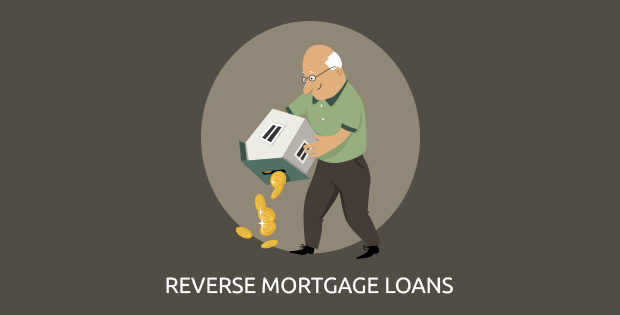
- About Us
- OUR OFFERINGS
- CALCULATORS
- RESOURCE CENTRE
-
Quick Links
- Existing Customers Benefits
- Become a Partner
- Pre-Approved Projects
- Home Loan App
- Blog
- CSR
- Locations
- Roi Switch Policy
- Co-Lending Policy
- Co-Lending Partnerships
- Customer Sensitization Program
- ROI Range
- Borrower Education - SMA/ NPA classification
- Borrower Awareness - RBI Ombudsman Scheme
- Borrower Awareness - procedure for handover of property documents
- NEWS CORNER
-
INVESTOR RELATIONS
- Financial Reports
- Investor Presentations
- Annual Reports
- Notices
- ESG Profile
- IEPF
- Investor Call Transcript
- Corporate Announcement
- Public Issue of NCD'S
- Qualified Institutional Placement
- Investor Relations Contact
- Familiarisation Programmes
- ISO CERTIFICATIONS
- Forms for Shareholder KYC-PAN-Nomination update
- Credit Ratings
- Statutory Advertisements
- ODR Portal
- Rights Issue
- Sustainable Financing Framework
- CONTACT US
- Login
 Apply
ApplyOnline

India's 1st Completely Online Home Loan!
-
e-APPLY
-
e-SANCTION
-
e-DISBURSE
Start your eHome Loans Process Now!
Apply OnlineRepo rate and its effects on home loans

- Apr 03, 2019
- VIEWS: 4637
Repo rate and its effects on home loans
When one takes out a loan, they have to take several factors into consideration. These include the loan tenure, the down payment they can afford and the equated monthly instalment or EMI they can pay comfortably. However, not many know that the lending rate offered by banks to borrowers is actually based on the lending rate at which funds are offered to the bank by the country’s central financial institution, the Reserve bank of India. The concept of repo rate remains a puzzle to most borrowers. So we decided to explain what repo rate is and the effect of repo rate cut on home loan.
What is repo rate?
We all know that to take a loan we have to approach a bank or a financial institution like a non-banking finance company. In case of a home loan, we can also approach a housing finance company. But have you wondered how banks come up with the sums to offer the loan. Aside from the amounts invested within, there are times, especially when an economy is going through a financial crisis, like an inflation. At such times, commercial lenders need to borrow money to provide funds to their borrowers from an external source. This source is the country’s central bank, The Reserve Bank of India.
The repo rate is therefore, the rate at which the RBI lends funds to commercial lenders when there is a shortage of funds. Monetary authorities use repo rate to control inflation. During periods of inflation, the RBI increase the repo rate which serves as a distinctive for banks to borrow from it. Increasing the repo rate reduces the supply of money and helps arrest inflation. Similarly, when an economy is going through a stable period, the RBI can decrease the repo rate and the lending institutions can pass on the benefit to lenders as well.
Home loan repo rate
Now, let us understand how repo rate affects home loan
In April 2019, the Monetary Policy Committee of the RBI announced that the repo rate would be decreased by 25 basis points (bps). The RBI has lowered the repo rate from 6.25% to 6%. This is attributed to the fact that the Indian economy is currently stable. In fact, this is the second time in a single year that the repo rate has been reduced. To understand the effect of repo rate cut on home loan we need to know how repo rate impacts your home loan EMI. Here’s how it happens:
A low repo rate typically translates into a low-cost loan for the general public. Now, in case commercial banks borrow money from the RBI to fund loans; when the repo rate is reduced by the RBI, borrowers expect their lending bank to extend or pass on this benefit of reduced interest rates to them as well. When the interest rate on a home loan is reduced, it also decreases the loan EMI.
Likewise, when the repo rate increases, lenders increase the interest rate on home loans and customers find home loans expensive. Lenders charge higher interest rates because the RBI and commercial banks acquire the necessary funds by paying a higher interest rate themselves. This in turn forces them to increase their lending rates.
That said, it should be noted that banks typically take some time to decrease their lending rates even when the RBI has slashed its rates. But, when the repo rate increases, banks immediately increase the interest rate. So, despite the fact that the RBI has already reduced the repo rate in April, new borrowers need to wait some time until they can avail this benefit of reduced interest rates.
Let’s understand repo rate effect on home loan and EMI with the help of an example
Let’s say you have taken out a home loan of ?3,000,000 for tenure of 15 years. If your bank is offering an interest rate of 8.75%, you would be paying a monthly EMI of approximately ?29,983. Now, if the interest rate is reduced by 25bps, and if the bank passes on this benefit (in entirety) to you, the borrower, your monthly EMI amount comes down to ?29,542. While this may not seem like a huge reduction at face value, you could end up saving approximately ?80,000 throughout the tenure of the loan, making it a huge saving in the long term.
Role of the RBI
In conclusion, to ensure that borrowers can benefit from home loan repo rate reductions, the RBI has introduced the MCLR or Marginal Cost of Fund Based Lending rates regime, under which banks have to charge interest rates based on RBI guidelines and the interest rate charges cannot be less than the limit prescribed by RBI so as to change the way commercial lenders function. Banks are required to inform their customers of the new interest rates each month, for a minimum tenure of 5 years. Under this new MCLR system, the repo rate and EMI are expected to have a stronger relationship as banks cannot have a margin higher than 25bps while lending funds.
No Comments
Subscribe
Most Viewed Blogs
Categories
- Home Loans Guide 125
- Home Renovation Loan Guide 3
- Home Loan Transfer Guide 14
- Home Extension Loans Guide 1
- Loan Against Property Guide 28
- Home Loan Interest Rates Guide 2
- Others Guide 8
- Home Decor & Lifestyle Guide 5
- Plot Loan Guide 3
- PMAY Guide 5
- Uncategorized Guide 1
- NRI Home Loans Guide 5
- Financial Resolutions Guide 1
- New Year Resolutions Guide 1
Archives
- Mar 2020
- Jan 2020
- Nov 2019
- Jul 2019
- Jun 2019
- May 2019
- Apr 2019
- Mar 2019
- Feb 2019
- Jan 2019
- Dec 2018
- Nov 2018
- Jul 2018
- Jun 2018
- May 2018
- Apr 2018
- Mar 2018
- Feb 2018
- Jan 2018
- Dec 2017
- Nov 2017
- Oct 2017
- Sep 2017
- Aug 2017
- Jul 2017
- Jun 2017
- May 2017
- Apr 2017
- Mar 2017
- Feb 2017
- Jan 2017
- Dec 2016
- Nov 2016
- Oct 2016
- Jun 2016
- Apr 2016
- Mar 2016
- Feb 2016
- Jan 2016
- Dec 2015
- Nov 2015
- Oct 2015
- Sep 2015
- Aug 2015
- Jul 2015
- Jun 2015








